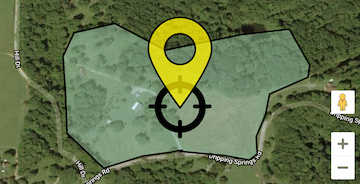


Rackmaster Deluxe Fall Deer Mix
Pennington’s RACKMASTER Fall Deluxe Deer Mixture is a combination of winter annual grasses, legumes and brassica species that attract deer and provide the carbohydrates needed to help the deer herd build up stored fat to maintain good body condition through the rut and winter stress period. Wheat, oats, rye, Austrian winter peas, crimson clover and brassica are included in this premium seed mix - all of which supply the high protein and energy deer need during the winter season. This combination of ingredients ensures that a nutrient dense food source is available for 6 or more months throughout winter and into early spring. RACKMASTER Fall Deluxe Mixture also provides excellent habitat for quail and turkey. It features RapidResults seed germination enhancement technology which promotes quicker emergence and stronger, deeper root growth. The result is a hardier and more productive food plot that will attract and hold wildlife in the area longer.
USES:
To furnish the proper nutrition needed by deer to maintain body condition and good health throughout the late fall and winter months and on into the spring fawning period. To attract and hold deer in the area throughout the hunting season. To provide food and cover for other wildlife species including turkey and quail.
Sizes:
Planting:
Method: Choose a site that receives a minimum of 8 hours of full sun. Prepare a clean, smooth and firm seedbed by plowing and dragging the soil. Fertilizer and lime can be applied during this step to incorporate it into the soil. Plant with a drill or broadcast seed evenly across the soil surface and incorporate it using a culti-packer or by shallow disking. Care should be taken to ensure seed are planted at the proper depth. If seed are disked in, the use of a culti-packer or roller after seeding ensures good seed/soil contact which improves stand emergence.
Seeding Date: South - Sept. 15 thru Nov. 30; Upper South - Sept. 1 thru Oct. 15; North - Aug. 15 thru Oct. 1
Seeding Rate: 100 lbs./acre or 2 ½ lbs./1000 sq. ft.
Depth: 1/4” – 1/2” (stand failures will result from seed planted too shallow or too deep).
Fertilizer: Soil testing is highly recommended. Liming to a pH of 6.0-6.5 and providing adequate levels of potassium and phosphorus are necessary to ensure a productive food plot. See your local county extension office for soil sampling assistance. In the absence of a soil test, apply 400 lbs. /acre 10-10-10 (10 lbs. /1000 sq. ft.) or equivalent fertilizer and 1 ton/acre ag lime (50 lbs./1000 sq. ft.). Apply fertilizer just prior to seeding. If practical, apply lime a minimum of 3 months ahead of planting.
Management:
Fertilizer: To boost forage production and extend the browsing period into spring, apply a second application of 400 lbs. /acre 10-10-10 (10 lbs./1000 sq. ft.) or equivalent fertilizer in late winter just prior to the spring growth flush of the small grains. Or, if a soil test from the plot area indicates soil potassium and phosphorus levels to be adequate, a sidedress application of 125 lbs. /acre (3 lbs. /1000 sq.ft.) 34-0-0 or equivalent nitrogen fertilizer in late winter is sufficient.
Tips for Successful Food Plots:
1. Every successful food plot begins with a soil test. Most woodland soils have low pH and low fertility. A soil test will tell you how much fertilizer and lime is needed. Information on taking a soil test can be obtained from your local county extension office.
2. Spend the extra time necessary to properly prepare the soil by plowing, smoothing and firming the ground. Planting on a weed free, smooth and firm seedbed that allows good seed-soil contact is essential for a thick, productive forage stand.
3. Plant seed at the proper seeding depth. Planting too shallow or too deep can result in stand failure. Seed mixes containing small seeded legumes and forbs should not be seeded deeper than ¼ inch. Use a cultipacker, log or a light drag to firm the soil after planting.
4. When selecting a wildlife food plot site, choose an area that is long and narrow with curves or bends in it. This provides a sense of comfort and safety for wildlife. When developing food plots, a good rule of thumb is to plant 2.5 to 7 acres of food plots for every 100 acres of habitat.
5. Avoid droughty sites such as eroded hillsides or shallow, rocky soils. Southwest facing slopes are hotter in the summer and tend to dry out faster than bottom land.
6. A minimum of 50% full sunshine is essential for a healthy and productive food plot. Morning sun is better than afternoon sun for summer game food plots. The reverse is generally true in the winter.

